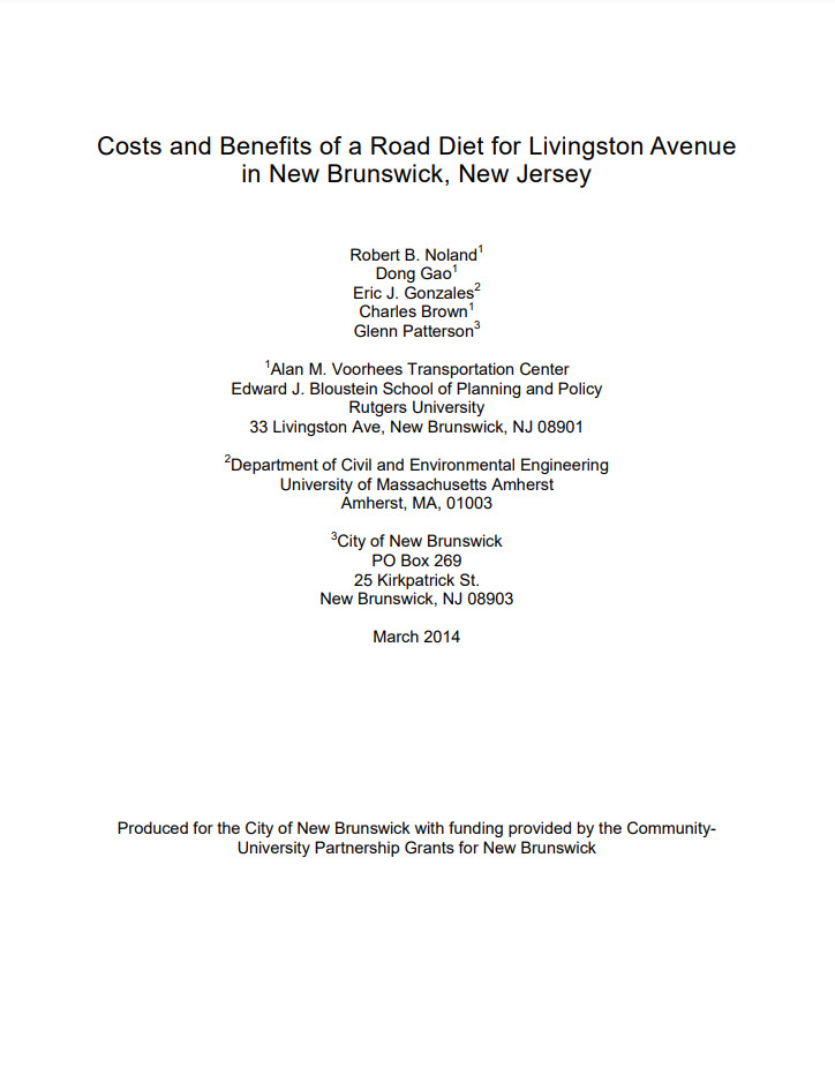Abstract
The analysis presented here is of a candidate road diet conversion site, Livingston Avenue in New Brunswick, New Jersey, an oversized arterial corridor accessing the center of the city. The VISSIM micro-simulation model is used to analyze current conditions and a number of road diet scenarios. The key measures analyzed are changes in average vehicle travel time and travel delay, as well as delays at signalized intersections. For this specific case of Livingston Avenue in New Brunswick, we find that the road diet may increase average travel delay, but has little impact on level of service
at signalized intersections.
